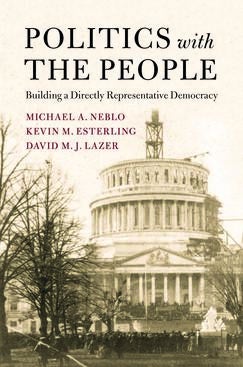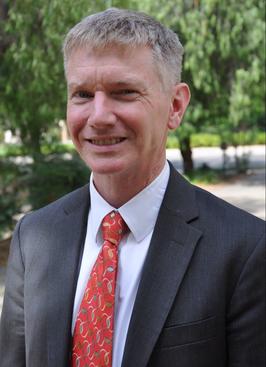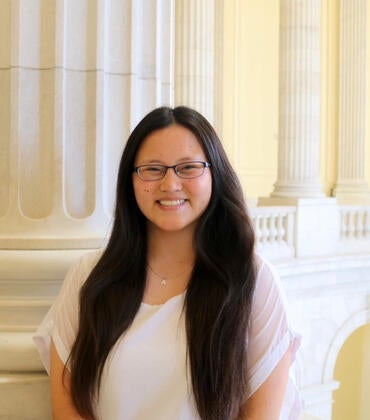
It’s an experience that’s become all too familiar: You log in to Facebook and scan an elected official’s most recent post, tentatively optimistic about the conversation it might’ve inspired. But as soon as you scroll down to the comments section, you realize your hopes were unfounded. The “conversation” has devolved into a cesspool of partisan name-calling and other insults.
“People don’t typically go to places like Facebook to have substantive conversations — the platform just isn’t conducive to that,” said political scientist Kevin Esterling. “But that doesn’t mean reasoned discussion can’t happen on such a platform. The challenge lies in designing a space that induces people to think and become informed before they comment.”
Esterling, a professor of public policy and political science at the University of California, Riverside, would know. For the past 15 years, he’s partnered with the nonpartisan, nonprofit Congressional Management Foundation, or CMF, advising members of the U.S. House of Representatives and Senate on how best to communicate with their constituents online.
Esterling said over time, he and two of his collaborators, Michael Neblo of The Ohio State University and David Lazer of Northeastern University, have witnessed a growing disconnect between elected officials and their constituencies. In recent years, the disconnect has reached a crescendo, manifesting in the form of low Congressional approval ratings, partisan polarization, and a pendulum swing toward populism.
The researchers chart these challenges to democracy — and introduce a potential new way forward — in their recently released book, “Politics With the People: Building a Directly Representative Democracy” (Cambridge University Press). According to the trio, a major contributor to the American people’s discontent is a lack of “meaningful avenues” for constituents to engage effectively with their representatives.
“People tend to think of democracy in a very limited way — as voting, or making campaign contributions, or protesting,” Esterling said, emphasizing that as districts have grown in size, it’s become increasingly difficult for many elected officials to communicate directly and candidly with their constituents.
“Our thinking is that if we can use interactive technologies to create new ways for citizens to have a better connection with their government, it might lessen some of the anger and dissatisfaction they’re feeling,” he added.
The researchers tested their hypothesis by designing an online, webinar-style platform that mimicked the format of a more traditional town hall. The town hall, Esterling explained, is a defining element of “deliberative democracy,” a system that sees dialogue — and the context in which it occurs — as central to legislative decision-making.
With funding from the National Science Foundation’s Digital Government Program, Esterling, Neblo, and Lazer kicked off their first series of 19 online town halls in 2006, inviting members of the House from 12 congressional districts to discuss a controversial domestic policy issue — immigration reform — with their constituents. Participants were recruited randomly, with about 35 percent of those contacted agreeing to attend a session.
Prior to each session’s start, participants were given high-quality informational materials about the topic to be discussed. To ensure the materials remained politically neutral, the researchers summarized writings from the Congressional Research Service, which produces unbiased, factual reports for all members of Congress.
“Constituents were free to ask any questions and make any comments they chose, provided the questions and comments remained on topic,” the researchers said of the sessions’ structure. After questions had been typed and inputted, the session’s participating elected official would orally read and address them as a captionist transcribed the responses in real time.
Esterling described the study’s findings as pleasantly surprising. First, and perhaps most importantly, participants who showed up for the online sessions represented a broader — and more accurate — cross-section of eligible voters than actual voters.
“The people who are less likely to participate in standard politics — such as voting or making campaign contributions — were the ones who were equally or even more likely to participate in our deliberative town halls,” the researchers said, adding the sessions were particularly attractive to younger and lower-income participants, nonpartisans, racial minorities, and women.
Second, the constituents who participated in the sessions gained more knowledge than those constituents who were randomly assigned to a comparison group and didn’t participate in a town hall. As for one of the more shocking discoveries? Out of the nearly 2,000 comments the researchers processed throughout the series, none had to be filtered out due to incivility.
The researchers’ results also survived scaling up; in 2008, they retested the model, this time inviting a larger pool of constituents to discuss detainee policy. In both cases, 97 percent of participants said they would be interested in doing another session. Moreover, in surveys conducted four months after the sessions, participants from both parties reported being more likely to vote and more likely to vote for officials who they felt had engaged them substantively.
“The instinct of most elected officials is to control the message,” Esterling said. “But what we found is that by relinquishing control, allowing their constituents to set the agenda and ask the questions, and giving unscripted responses to those questions, the members of Congress who participated in our study earned much more respect from their constituents.”
The researchers’ hope, he added, is that if constituents were given the tools to provide higher-quality input on legislative and policy issues, elected officials would be more likely to make better use of it.
“We’re trying to lay the groundwork to enable people to have more reasoned conversations with their elected officials,” he said. “We want the book to stand as a set of design principles for a potential online platform; we’re even giving a copy to every sitting member of the House and Senate.”
Later this month, meanwhile, Esterling, Neblo, and Lazer will travel to Silicon Valley to meet with executives at tech companies including Google and Facebook. Their goal is to determine if an opportunity exists to collaborate on the development of a platform or app for hosting similar town halls in the future.
Esterling said tech companies, many of which have come under fire for contributing to the spread of fake news and partisan polarization, would do well to partner with political scientists when considering new ways to safeguard the democratic process.
“We do want to continue to work with members of Congress to routinize using such a platform, even if we have to cobble it together ourselves,” he added. “But it’s really in some of the tech companies’ own business interests to invest in figuring out how to help solve these issues.”





